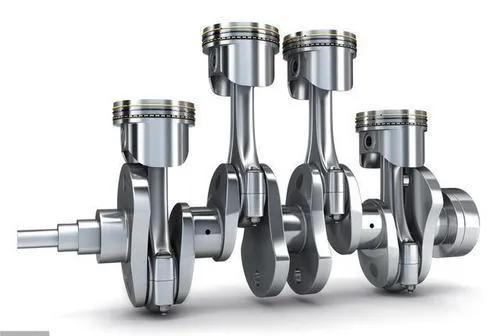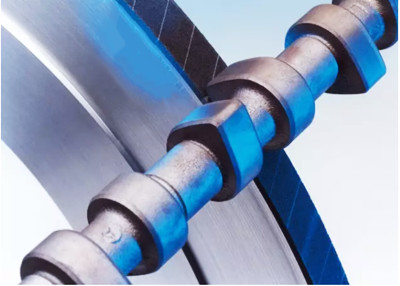How to high precision grinding Crankshaft
What is Crankshaft?
Crankshaft is the core component to ensure the normal operation of the engine. Therefore, every part of the crankshaft, such as flange end, shaft head end, spindle neck and connecting rod neck, must be precisely grinded.

The crankshaft is the main rotating part of the engine. After the connecting rod is installed, the up and down (reciprocating) movement of the connecting rod can be changed into circular (rotating) movement。
The crankshaft is an important part of the engine. It is made of carbon structural steel or ductile iron and has two important parts: the main shaft neck and the connecting rod neck (among others). The main shaft neck is installed on the cylinder block, the connecting rod neck is connected with the big hole of the connecting rod, and the small head hole of the connecting rod is connected with the cylinder piston, which is a typical crank slider mechanism.
How the crankshaft works?
Crankshaft is one of the most typical and important parts in the engine. Its function is to convert the gas pressure transmitted by the piston connecting rod into torque, which is used as power to output work, drive his working mechanism, and drive the auxiliary equipment of internal combustion engine to work.
Grinding parts:
Main shaft neck, connecting rod neck, shaft end (commonly known as small head), flange end
The roundness quality of all crankshaft journals is critical to determining the stability and wear of the crankshaft during operation. Grinding wheel is one of the important factors to ensure the high quality of machining dimension, surface finish and roundness. CBN grinding wheel is generally used for crankshaft grinding.
Skinning grinding, a grinding method similar to turning processing, has good flexibility and high grinding efficiency. Skinning grinding is widely used in high speed grinding of shaft parts. Skinning grinding usually uses CBN grinding wheels of about 4-6mm width, and a 10-15° chamfering area is set in the abrasive layer, whose width is generally 1-2mm, and the width of the outer circle part is 3-5mm. The chamfered area is used for rough grinding to remove allowance, while the outer circle part is used for fine grinding to obtain the size and precision of the machined surface. During grinding, the grinding wheel rotates at a high speed (usually 90-150 m/s) and moves axially with a certain grinding cut depth to achieve axial feed (>100mm/min) and peel the material from the workpiece surface, similar to turning processing. Since the grinding wheel is very thin, the rotation speed of the workpiece during grinding needs to be high enough to avoid spiral lines. In peeling grinding, the contact area between grinding wheel and workpiece is smaller, so the required grinding force is also smaller, which avoids grinding vibration and workpiece deformation caused by excessive grinding force, and improves the machining accuracy.

The advantages of vitrified CBN grinding wheel are:
1. Easy to dress
2. The shape and accuracy of grinding wheel can be guaranteed through dressing;
3. Multi-porosity structure, ensure the good infiltration of coolant, take away chips;
4. Longer service life
Moresuperhard vitrified CBN grinding wheel can match Toyota (JKT), German Junker, Schaudt, Poleks, EMag, etc.
—EDITOR: Doris Hu
—POST: Doris Hu






